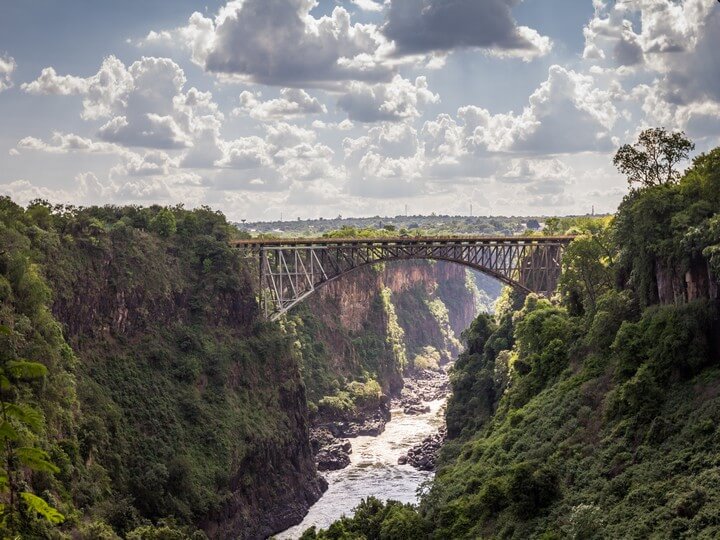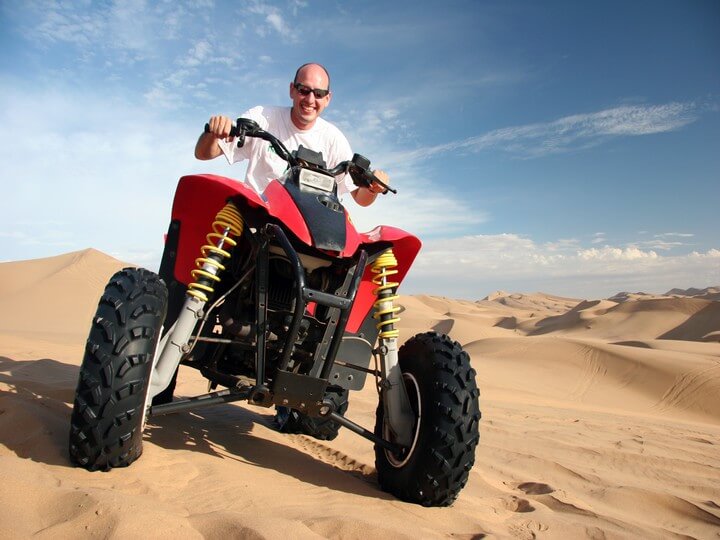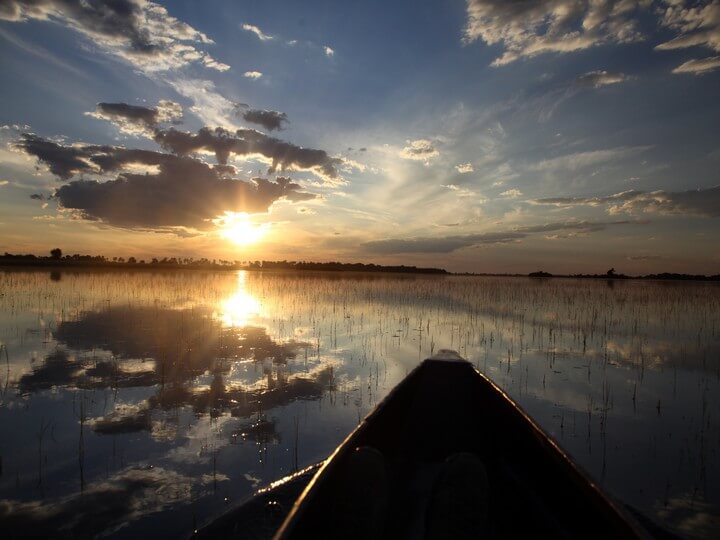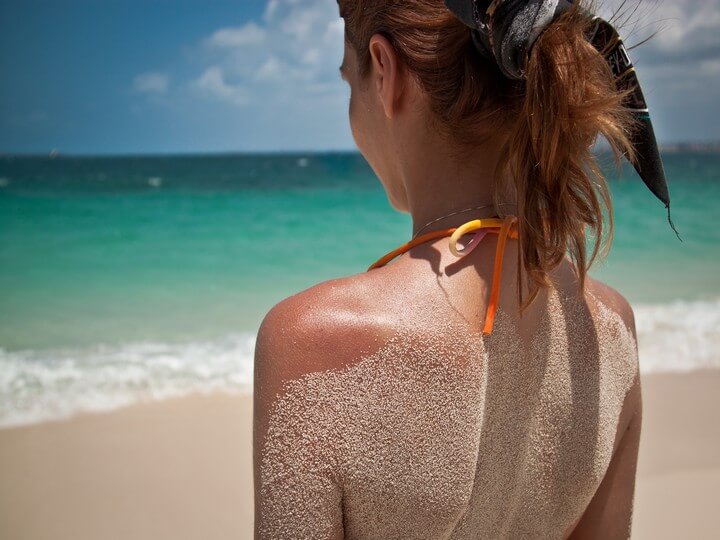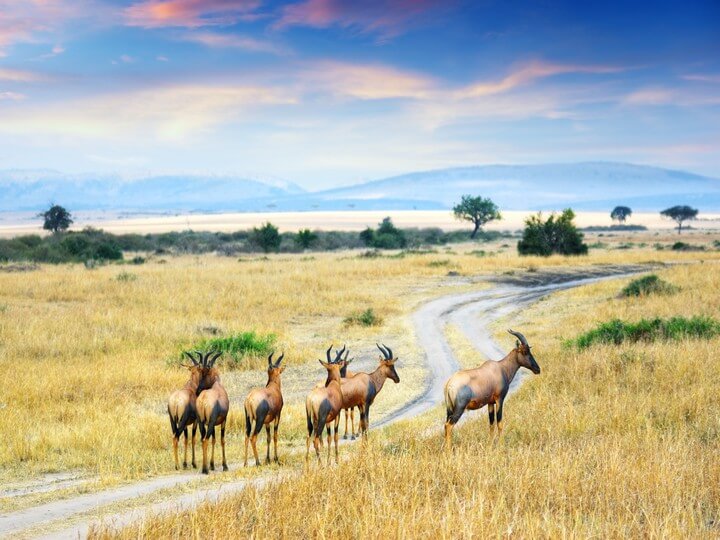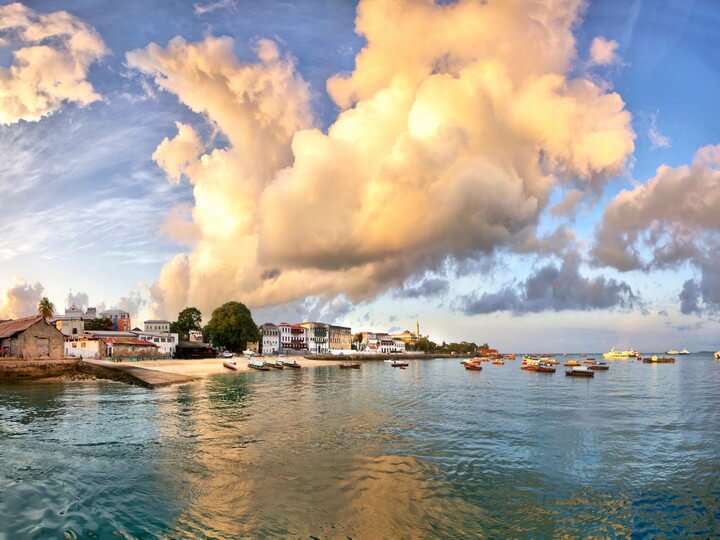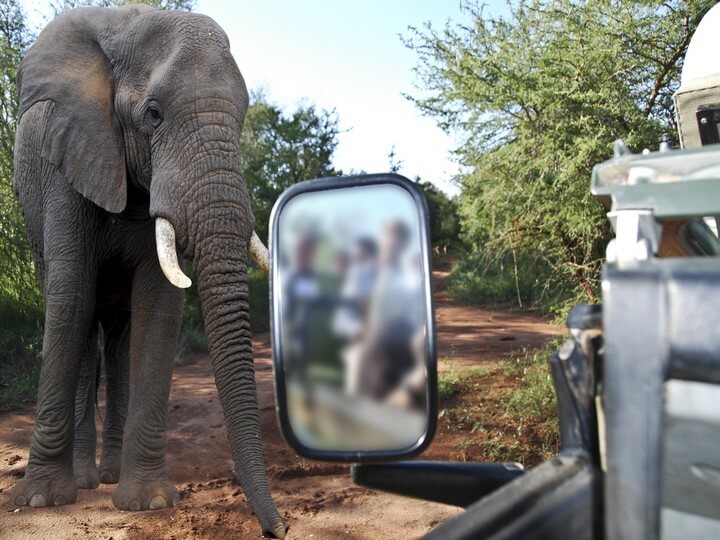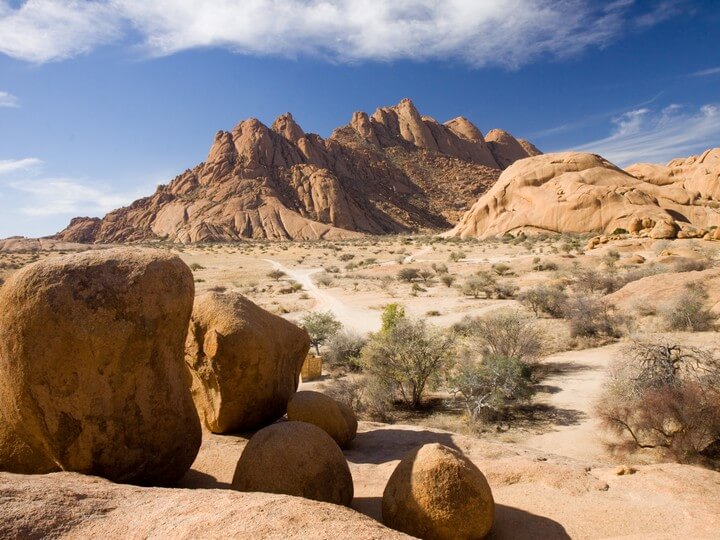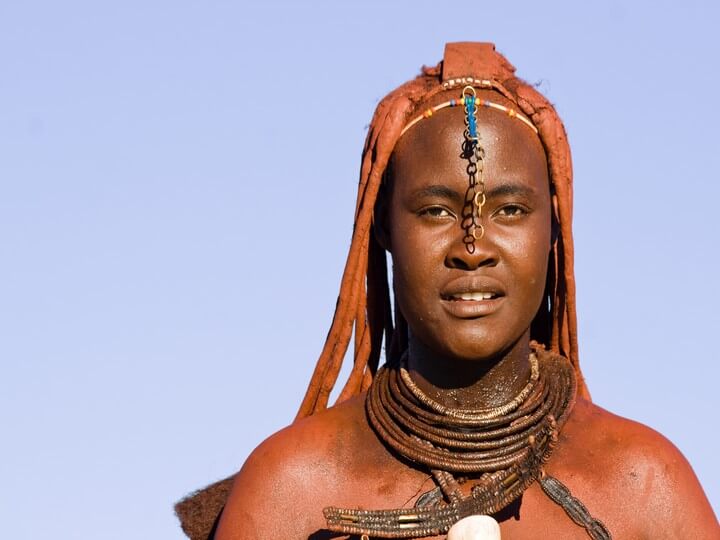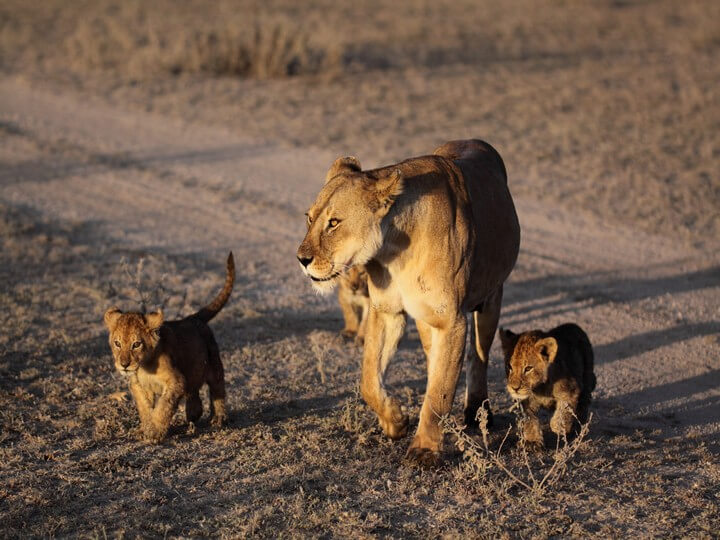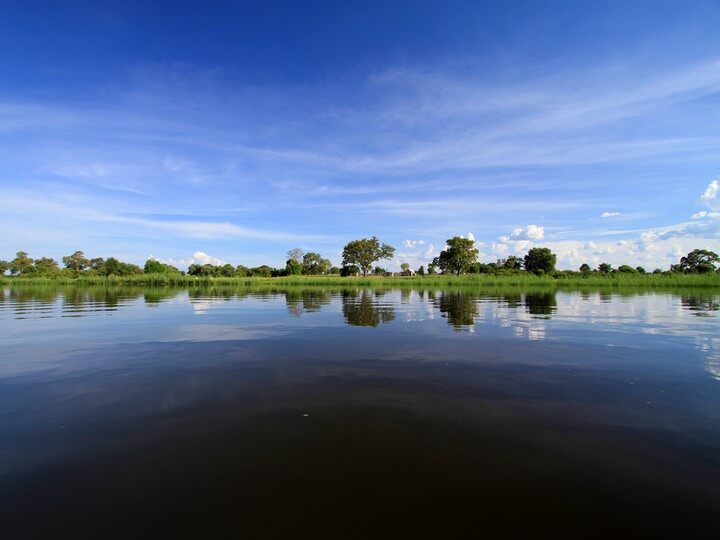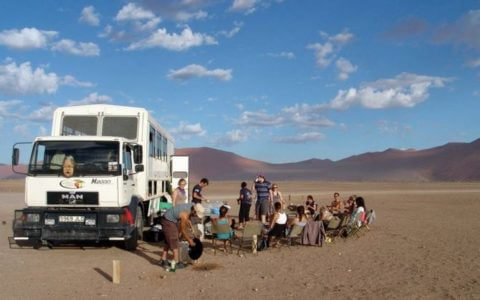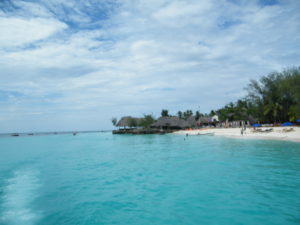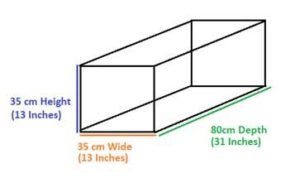| Tour start → end dates | Price | Enquire |
|---|---|---|
| 11 May 2024 → 24 Jun 2024 |
From R156300 |
Check Availability |
| 08 Jun 2024 → 22 Jul 2024 |
From R156300 |
Check Availability |
| 06 Jul 2024 → 19 Aug 2024 |
From R156300 |
Check Availability |
| 03 Aug 2024 → 16 Sep 2024 |
From R156300 |
Check Availability |
| 31 Aug 2024 → 14 Oct 2024 |
From R156300 |
Check Availability |
| 28 Sep 2024 → 11 Nov 2024 |
From R156300 |
Check Availability |
| 26 Oct 2024 → 09 Dec 2024 |
From R156300 |
Check Availability |
| 23 Nov 2024 → 06 Jan 2025 |
From R156300 |
Check Availability |
Nairobi to Johannesburg Overland Tour (Camping) (45 Days)
Tour Details
| Tour Style | Camping |
|---|---|
| Length | 45 days |
| Countries Visited | South Africa, Botswana, Uganda, Zimbabwe, Zambia, Malawi, Tanzania, Kenya |
| Starts | Nairobi |
| Ends | Johannesburg |
| Group Size | Max 20 |
| Age Range | 12 – 65 Years and older |
| Tour SKU | CAM0470 |
What You'll Experience
- Nairobi
- Masai Mara National Reserve
- Lake Nakuru National Park
- Mountain Gorillas (optional upgrade)
- Ngorongoro Crater
- Serengeti National Park
- Dar es Salaam
- Lake Malawi
- South Luangwa National Park
- Lusaka
- Victoria Falls
- Chobe National Park
- Savuti
- Khwai Conservation area
- Okavango Delta
- Maun
- Johannesburg
Why You'll Love this Tour
The Nairobi to Johannesburg Overland Tour leaves from the bustling city of Nairobi and takes you to the Masai Mara Game Reserve. Enjoy some of the best highlights: Murchison Falls and Silver Back gorillas in Uganda, the Serengeti National Park, Zanzibar, Lake Malawi, South Luangwa National Park, Victoria Falls, Chobe National Park, the Okavango Delta and Bushman of the Kalahari. If you would prefer an accommodated tour, please chat to one of the consultants.
Tour Price
FROM
R156,300
+ Single Supplement 9300
+ Optional Gorilla Trekking USD 750 - USD 850
+ Kenyan National Parks Surcharge USD 100 - USD 200
You might also be interested in:
Dates Tour Length: 45 days
Included
- Meals - 42 x Breakfast, 43 x Lunch, 42 x Dinner
- Accommodation
- Filtered Water
- Registered guides
- Transport per itinerary
- Masai Mara Excursion
- Lake Nakuru NP Game Drive
- Crossing of the Equator
- Chimp trekking (half day) / Nile River Cruise
- Full day 4x4 excursion to Ngorongoro Crater and afternoon drive into Seronera
- Game Drive through Seronera, Serengeti National Park
- Zanzibar Excursion
- Prison Island boat tour / Walking Spice Tour
- Coffee Plantation Visit
- Village Walk with Tour Leader
- Sunset Game Drive in South Luangwa National Park
- South Luangwa Textile project visit (full tour available March to December)
- Chobe National Park Boat Cruise
- Game Drive through Savuti Game Reserve in 4x4 safari vehicles
- Okavango Delta Morning Mokoro Excursion / Khwai Conservation Afternoon Game Drive
- San Evening Dance Performance
Excluded
- International Airfares
- Travel insurance (Get Adventure Travel Insurance) and medical insurance
- Personal spending money
- Visa costs
- Border taxes
- Passports
- Vaccinations
- Personal taxes (including departure and border taxes)
- Optional activities
- Unscheduled or optional national / game parks and other activities
- Gratuities
- Sleeping bag if needed
- Restaurant meals (other than those listed)
- All drinks - Alcohol, Soft Drinks, Bottled Water
- Snacks
- Souvenirs
- Laundry
- Other items of a personal nature
- Gorilla Permit - Please note that the Gorilla Permit cost for guests Traveling after 1 July will be $850 USD per person for a one Day Trekking.
Activities
Some of the activities you can take part in on this tour.
Included in the Tour Price
- Masai Mara Excursion
- Lake Nakuru NP Game Drive
- Crossing of the Equator
- Chimp trekking (half day) / Nile River Cruise
- Full day 4x4 excursion to Ngorongoro Crater and afternoon drive into Seronera
- Game Drive through Seronera, Serengeti National Park
- Zanzibar Excursion
- Prison Island boat tour / Walking Spice Tour
- Coffee Plantation Visit
- Village Walk with Tour Leader
- Sunset Game Drive in South Luangwa National Park
- South Luangwa Textile project visit (full tour available March to December)
- Chobe National Park Boat Cruise
- Game Drive through Savuti Game Reserve in 4x4 safari vehicles
- Okavango Delta Morning Mokoro Excursion / Khwai Conservation Afternoon Game Drive
- San Evening Dance Performance
Other Activities
Optional activities available on this tour at your own expense:
- Ziwa Rhino Walk
- Nile River Cruise
- Pygmy visit, Rwanda day tour
- Quad biking, kayaking, rafting
- Giraffe Centre / Nairobi National Park
- Fishing, Snorkelling, Scuba Diving, Turtle Sanctuary Visit, Village Tours, and more
- Mikumi Game Drive
- Safari Walk (seasonal) or Morning Game Drive in South Luangwa
- Visit to the falls, Bungee Jump, Gorge Swing, Sunset Cruise, Helicopter Flights, Boma Dinner Experience
- Chobe National Park Game Drive
- Scenic Flight over Okavango Delta
- San Guided Walk (could take place the next morning)
- Johannesburg Traditional meal at Belvedere Estate
- Gorilla Trekking
Itinerary
Day 1 - 2
Masai Mara National Reserve, Kenya
We leave Nairobi today and travel to the Masai Mara Reserve – a vast region rife with incredible wildlife that allows for spectacular photographic opportunities. Our visit to the Mara will be in safari type vehicles and not in the overland truck. Please pack a small overnight bag containing basic essentials such as your towel, clothing, toiletries.
The Masai Mara is famous for being the Greatest Wildlife Reserve of Africa, renowned for its profusion of lion, the Great Wildebeest Migration and the Masai people who are well-known for their distinguishing customs and dressing styles. The Masai Mara is by far one of Africa’s truck popular and beautiful safari destinations. Spreading over 1530 square kilometres of land and is bound by the Serengeti Park at the south, the Siria slopes to the west and the Masai pastoral ranches to the north, east and west. The reserve’s landscape is mainly vast savannah grassland with occasional rivers that come and go according to the seasons. The Great Migration is one of the most remarkable natural phenomenons of the world, encompassing around 1.5 million wildebeest, 360,000 Thomson’s gazelle and approximately 191,000 zebras. These various travelling animals are shadowed closely on their yearly circular course by a wide assortment of ravenous predators, namely lions and hyena.
All animals comprising Africa’s Big 5 can be spotted in the Masai Mara, though the number of black rhino is extremely threatened with a population of a mere 37 (recorded in 2000). Hippo can be found in big gatherings in the Masai Mara and in the Talek rivers. Cheetah are also found, but their population too is threatened. In addition to this, more than 450 species of bird have been identified in the Park, including marabou storks, secretary birds, hornbills, crowned crane, ostriches, long-crested eagles and African pygmy-falcons.
Accommodation: Camp: Permanent Tent Masai Mara Excursion
Facilities: Shared Ablutions Please visit the website of the accommodation provider for a full list of the facilities offered
Route: Nairobi to Masai Mara
Meals: Breakfast x1, Lunch x2, Dinner x2
Included Highlight: Masai Mara Excursion
Day 3
Masai Mara – Lake Nakuru, Kenya
We depart from the Masai Mara and journey north to Lake Nakuru where we devote our afternoon to game driving. First established as a bird sanctuary, Lake Nakuru was developed into a National Park in 1968. White rhino roam frequently through the savannah area that surrounds the lake, providing us with incredible photo opportunities.
Lake Nakuru National Park inherited it’s name from the alkaline lake that surrounds it. Nakuru means ‘dry or dusty place’ in the Masai language. Though the Park was initially created as a bird sanctuary, it is now inhabited by an immense number of various animal species, including the Big Four – lion, leopard, rhino and buffalo (unfortunately the Park is not home to any elephants). Famous for its enormous flocks of flamingos that gather around the edges of its shores due to the abundance of algae in the waters, Lake Nakuru is also a haven for black and white rhino and, and has recently been extended in order to provide protection for these majestic, endangered creatures.
Accommodation: Two Per Room: Waterbuck Hotel
Facilities: En-suites facilities Please visit the website of the accommodation provider for a full list of the facilities offered
Route: Masai Mara to Lake Nakuru National Park
Meals: Breakfast, Lunch, Dinner
Included Highlight: Lake Nakuru NP Game Drive
Day 4
Jinja, Uganda
We say goodbye to Lake Nakuru and make our way across the equator towards Uganda’s second largest city – Jinja. Jinja is famous for being the place where the Nile River flows out of Lake Victoria and initiates the 6695 kilometre adventure to Egypt and finally, the Mediterranean Sea.
Originally a fishing village that profited from being situated on long-distance trading courses, Jinja was established as a city in 1901 by the British as an administrative centre for the Provincial Government Headquarters for the Busoga area. This took place around the same time that Lake Victoria’s significance in transport heightened due to the Uganda Railway joining Kisumu – a Kenyan town located on the lake with Mombasa on the Indian Ocean, 1,400 kilometres away. Jinja was able to increase it’s size due to cotton-packing, nearby sugar estates and access to the railway. In 1906 a street layout was established and Indian traders began to inhabit the area from around 1910.
At one point in time, Jinja contained a massive East Indian community up until they were forced out of Uganda by Idi Amin in 1971/1972. Most of the architecture in Jinja is Indian-influenced, although the intricate shop-fronts and buildings were not well-maintained after the departure of the Indians. Local industrial concerns collapsed and the majority of the East Indians who are presently heading back to Uganda have decided to start up businesses again.
Accommodation: Camp Kalagala Falls Tented and Overland Camp
Facilities: Shared Ablutions Please visit the website of the accommodation provider for a full list of the facilities offered.
Route: Lake Nakuru to Jinja
Meals: Breakfast, Lunch, Dinner
Border Post: Kenya: Busia +254 20 2649524; Open 24 hours Uganda: Busia; +256 414 423 2645; Open 24 hours
Day 5
Masindi – Murchison Falls National Park, Uganda
We make a brief stop in Kampala before making our way to Murchison National Park – Recognized as one of the best National Parks in Uganda. Once settled in at your accommodation, a briefing will be given on the various activities available for the upcoming day.
Accommodation: Camp: Kabalega Resort Hotel
Facilities: Shared Ablutions Please visit the website of the accommodation provider for a full list of the facilities offered.
Route: Jinja to Masindi
Meals: Breakfast, Lunch, Dinner
Optional Activity: Ziwa Rhino Walk
Day 6
Masindi – Budongo Central Forest Reserve, Uganda
Today you will participate in a Chimpanzee trek in the Budongo Forest as well as a boat cruise in the Murchison Falls Nation Park. The Budongo forest is the biggest Mahogany forest found in the whole of East Africa. Enjoy a game drive through the forest where you can spot other wildlife.
Note: If there are more than 12 guests on the tour, the group will be split into two between the morning and the evening. We ask that you please allow for flexibility.
Accommodation: Camp: Kabalega Resort Hotel
Facilities: Shared Ablutions Please visit the website of the accommodation provider for a full list of the facilities offered
Meals: Breakfast, Lunch, Dinner
Included Highlight: Chimp trekking (half day) / Nile River Cruise
Day 7
Lake Kikorongo Region, Uganda
We leave Masindi in the morning and are then transferred to the edges of Queen Elizabeth National Park. This evening, we will stay at the top of a hill that overlooks Lake Kiborongo during our overnight.
Accommodation: Camp: Simba Safari Camp
Facilities: Shared Ablutions Please visit the website of the accommodation provider for a full list of the facilities offered
Route: Masindi to Lake Kikorongo
Meals: Breakfast, Lunch, Dinner
Day 8
Gorillas (Lake Bunyonyi), Uganda
Today we cross the equator one more time as we travel south to Lake Bunyonyi.
A small, but beautiful lake with steep banks and plentiful birdlife, Lake Bunyonyi is circled by mountains and is most famous for its abundant otter population and picturesque surrounds. We take this day to unwind in this stunning spot the evening prior to our drive to the gorillas.
Lake Bunyonyi, or ‘place of many little birds’, is situated on the Rwandan border. At 25 kilometres long and 7 kilometres wide, the Lake spreads over 61 square kilometres, whilst it’s depth is said to deviate between 44 and 900 metres. It is one of the rare lakes in the area that is bilharzia-free and safe for swimming. All 29 of its islands are clustered in the central part of the region.
Accommodation: Camp: Lake Bunyonyi Overland Resort
Facilities: Shared Ablutions Please visit the website of the accommodation provider for a full list of the facilities offered
Route: Kampala to Lake Bunyonyi
Meals: Breakfast, Lunch, Dinner
Day 9 - 10
Gorillas (Lake Bunyonyi), Uganda
The mountain gorilla is extremely endangered and although the precise numbers of it’s population vary, it is largely believed that there are just around 650 of the gentle giants remaining. Paying a visit to the gorillas is a lovely way to support their future on earth as the money you spend on your gorilla permit contributes towards their protection. A crucial part of conserving the gorillas that are still left lies within the community development work. As local communities adjust their attitude towards nature and wildlife, and begin to protect rather than poach, the future of the beautiful mountain gorilla looks promising.
Because permits granted to visit the gorillas are extremely limited, we will require some flexibility on both our travel itinerary and the location where will actually get to see them. The mountain gorillas reside in man-made borders, therefore, their range includes Uganda, Rwanda and the DRC. Whenever it is possible, we will be making use of the National Park in Uganda, but this is dependent upon the availability of permits. If we do not manage to obtain permits for our Gorilla Trek, all passengers will be notified beforehand that our journey will travel to Rwanda or the DRC.
On our free day spent in Bunyonyi, we will have the chance to partake in Optional Activities. You can opt to go hiking or to explore the region via mountain bike.
PLEASE NOTE: Although there are 2 days allocated to Gorilla Trekking you only spend one day on the trek. The other day is there to provide a time period in which to obtain permits and to allow the group to trek if there are more than 6 of you on the tour.
Accommodation: Camp: Lake Bunyonyi Overland Resort
Facilities: Shared Ablutions Please visit the website of the accommodation provider for a full list of the facilities offered
Route: Lake Bunyonyi National Park to the starting point of the gorilla trek (in safari or smaller vehicles)
Meals: Breakfast x2, Lunch x2, Dinner x2
Optional Activity: Gorilla Trekking, Pygmy visit, Rwanda day tour
Day 11
Lake Mburo, Uganda
After leaving Lake Bunyonyi, we travel to Lake Mburo, another beautiful body of water in Uganda. There are rolling hills, open grasslands, and patches of woodland around Lake Mburo, which is located in the Ankole sub-region of Uganda near the town of Mbarara. Birdwatchers will find Lake Mburo National Park to be a paradise with over 350 species of birds recorded. Numerous bird species, including the rare and oddly looking shoebill stork, thrive in the diverse ecosystems of the park, which include acacia woodlands, savannahs, and wetlands.
Accommodation: Two Per Room: Leopard Rest
Facilities: En-suites facilities Please visit the website of the accommodation provider for a full list of the facilities offered
Route: Lake Bunyonyi to Mburo
Meals: Breakfast, Lunch, Dinner
Day 12
Jinja, Uganda
We leave early in the morning for Jinja and our final night in Uganda where you will be able to relax and have the afternoon to enjoy some activities such as rafting, kayaking or swimming around the Nile. If you do not enjoy water activities you can enjoy horse riding or quad biking.
Accommodation: Camp: Kalagala Falls Tented and Overland Camp
Facilities: Shared Ablutions Please visit the website of the accommodation provider for a full list of the facilities offered
Route: Mburo to Jinja
Meals: Breakfast, Lunch, Dinner
Included Highlight: Crossing of the Equator
Optional Activity: Quad biking, kayaking, rafting (time dependent, could happen the following day)
Day 13
Jinja, Uganda
In Jinja, adventurers and non-adventurers can choose from a variety of optional activities. It will be your day at leisure today, and your guide will assist you with planning it.
Accommodation: Camp: Kalagala Falls Tented and Overland Camp
Facilities: Shared Ablutions Please visit the website of the accommodation provider for a full list of the facilities offered
Meals: Breakfast, Lunch, Dinner
Optional Activity: Quad biking, kayaking, river rafting, source of the Nile Cruise
Day 14 - 15
Nairobi, Kenya
As we return to Kenya, we visit Eldoret, the fifth largest city in the country. At Eldoret, the altitude is 2100 metres above sea level, the Great Rift Valley still dominates the region’s geography.
During our return to Nairobi this afternoon, we will reflect on the many memories we have gathered, and prepare to spend the night in Nairobi before departing for Tanzania.
Accommodation: Camp: Naiberi River Camp (1st night), Two Per room Hotel Boulevard (2nd night)
Facilities: Shared Ablutions (Nairebi River Camp), En-suite facilities (Hotel Boulevard) Please visit the website of the accommodation provider for a full list of the facilities offered
Route: Jinja to Eldoret to Nairobi
Meals: Breakfast x2, Lunch x2, Dinner
There is flexibility in the itinerary and it can be modified at any time without notice in order to ensure that you are able to observe the Mountain Gorillas in the best possible way. Gorilla permits are also subject to change without notice.
Day 16
Arusha, Tanzania
We leave the lively capital of Kenya today and make our way into Arusha, Tanzania the gateway to the most amazing game reserves. After all border formalities we make our way to our camp for the evening.
Enclosed by some of Africa’s most well-known landscapes and National Parks, Arusha is located at the base of Mount Meru – on the eastern edge of the Great Rift Valley’s eastern branch. The city experiences mostly balmy weather due to its location on the hills of Mt Meru. Within close proximity to the Serengeti, Ngorongoro Crater, Lake Manyara, Olduvai Gorge, Tarangire National Park and Mount Kilimanjaro, Arusha contains its very own National Park, situated on Mount Meru. The main industry of this area is agriculture. Producers of huge vegetables and flowers send superb produce to Europe. Small-scale farming was negatively impacted by the somewhat recent ‘coffee crisis’ and has therefore transformed into mostly subsistence farming. Arusha has several factories including a brewery, tyre and fibreboard plant as well as a big pharmaceuticals manufacturer.
Accommodation: Camp: Njiro Legacy
Facilities: Shared Ablutions Please visit the website of the accommodation provider for a full list of the facilities offered
Route: Nairobi to Arusha ±290 km
Meals:Breakfast, Lunch, Dinner
Border Post: Tanzania: Namanga, no telephone number, Open: 24hrs, Kenya: Namanga, Tel: +254 455 32002, Open: 24 hrs
Day 17 - 19
Serengeti National Park (Seronera) – Ngorongoro Crater – Karatu, Tanzania
Our safari style vehicles pick us up this morning, and we depart Arusha early in the morning to drive directly to the Serengeti National Park. Our camp is located in the Seronera region of the Serengeti in the afternoon. We will enjoy the sights and sounds of nature passing right in front of your tent as we sip on a cold beverage this evening, while enjoying the spectacular views and abundant wildlife surrounding the camp.
The next morning we will enjoy a full day of wildlife viewing on a game drive through the Serengeti National Park. As the park is well known for the abundance of wildlife that it has, we will spend most of our day searching for the animals that can be found there.
On our morning commute, we will head towards Ngorongoro Crater, where we will enter the conservation area and explore the crater floor in search of wildlife. Upon completion of the exploration, we will leave the crater and travel to Karatu for the night.
Accommodation: Two Per permanent Tent: Seronera Private Tented Camp (Serengeti), Camp: Kudu Camp (Ngorongoro)
Facilities: En-suite facilities (Seronera), Shared Ablutions (Kudu) Please visit the website of the accommodation provider for a full list of the facilities offered
Route: Arusha to Serengeti National Park (Seronera), Karatu via Ngorongoro Crater to Karatu
Meals: Breakfast x3, Lunch x3, Dinner x3
Included Highlight: Full day game Drive through Seronera, Serengeti National Park, Morning Safari Drive in Serengeti National Park, Afternoon excursion to Ngorongoro Crater
Optional Activity: Hot Air Balloon Safari (pre-booking required, subject to availability & weather conditions)
Day 20
Arusha, Tanzania
We will visit the Mto wa Mbu Market shortly after our departure from Karatu, which is located in the small village of Mto wa Mbu. This town, which is noted for its rice crops and distinctive red bananas, lies on the main road that provides access to the Serengeti National Park and the Ngorongoro Crater Conversation Area. After departing from the Serengeti and visiting the Ngorongoro Crater, we return to Arusha and spend the night reminiscing about what we experienced.
Accommodation: Camp: Njiro Legacy
Facilities: Shared Ablutions Please visit the website of the accommodation provider for a full list of the facilities offered.
Route: Karatu to Arusha
Meals: Breakfast, Lunch, Dinner
Included Highlight: Mto wa Mbu Market
Day 21
Bagamoyo, Tanzania
From Arusha we head south towards Bagamoyo, who’s name means “lay down your heart” and goes back to the days of slavery. Today is a travel day where you will experience the markets, villages and magnificent views that give life to the rural Africa. Our accommodation for the night is the Bagamoyo Travellers Lodge and we prepare for the following days Zanzibar Excursion.
Accommodation: Camp: FireFly Lodge
Facilities: Shared Ablutions Please visit the website of the accommodation provider for a full list of the facilities offered
Route: Arusha to Bagamoyo
Meals: Breakfast, Lunch, Dinner
Day 22 - 24
Zanzibar Beaches – Stone Town (Zanzibar), Tanzania
Upon departing Bagamoyo, we proceed to Dar es Salaam, where we will catch a ferry to Zanzibar Island. In Zanzibar, we spend the next two nights at a beachfront resort on the eastern shore of the island. The hotel offers a variety of recreational activities such as a beach, swimming pool, and bicycle rental.
There is free time today to take advantage of some of the attractions and activities available. You will have ample opportunity today to create some memorable experiences on the island, no matter what you choose to do. Whether you wish to explore the many attractions on offer or simply relax on the beach, there is something for everyone.
We will be traveling by road to Stone Town this morning. A guided walking spice tour will be offered before we reach Stone Town, which will take us through villages and spice plantations. It will be possible for you to witness firsthand how spice farm workers climb the trees to search for specific plants. Furthermore, you will be able to purchase fresh spices directly from the farms. The next stop is Stone Town, a busy port town that once marked both the slave and spice trade routes. This town has a rich history that was once a major landmark. In addition to discovering the well-known landmarks, including the birthplace of Freddy Mercury, we will engage in a walking tour of Stone Town.
Accommodation: Two Per Room: Zanzibar Bay or Paradise Beach (Zanzibar Beaches), Paradise Inn (Stone Town)
Facilities: En-suite facilities Please visit the website of the accommodation provider for a full list of the facilities offered
Meals: Breakfast x3, Lunch x2, Dinner x2
Route: Dar es Salaam to Zanzibar(Eastern Shores), Eastern shores to Stone Town
Included Highlights: Zanzibar Excursion, Stone Town walking city tour, Spice Tour
Day 25
Dar es Salaam, Tanzania
It is time to say goodbye to the island of Zanzibar and catch our ferry back to Dar es Salaam, where we will spend the night before continuing on our journey.
Accommodation: Camp: Kariakoo Sleep-Inn
Facilities: En-suite facilities Please visit the website of the accommodation provider for a full list of the facilities offered
Route: Zanzibar to Dar es Salaam
Meals: Breakfast, Lunch
Day 26
Mikumi, Tanzania
We depart from the warm Indian Ocean coastline today and begin our journey to Mikumi National Park. Mikumi National Park is one of the largest parks in Tanzania and contains countless lion, zebra, wildebeest, impala, buffalo and elephant.
Accommodation: Camp: Camp Bastian
Facilities: Shared Ablutions Please visit the website of the accommodation provider for a full list of the facilities offered
Route: Dar es Salaam to Mikumi
Meals: Breakfast, Lunch, Dinner
Optional Activities: Mikumi Game Drive
Day 27
Iringa, Tanzania
Iringa is situated on a cliff and overlooks the Ruaha River Valley. The town takes visitors into the past with its German colonial influence and a popular market. There is the Commonwealth War Graves Cemetery which memorialises soldiers who died in local battles during WWI and WWII. As we approach the town, we stop at the Baobab Valley, known for its ancient, towering baobab trees that have survived the test of time for thousands of years. Against the African savannah, these imposing trees create a surreal and breathtaking scene, ideal for taking group photographs.
Accommodation: Camp: Kisolanza Farm
Facilities: Shared Ablutions Please visit the website of the accommodation provider for a full list of the facilities offered
Route: Mikumi to Iringa
Meals: Breakfast, Lunch, Dinner
Day 28 - 29
Mbeya Region – Lake Malawi, Tanzania
In the afternoon we visit a coffee plantation, where we will have the opportunity to see how the plant is grown and harvested beans, as well as sample some.
The next day we leave Tanzania behind and cross the border into Malawi as we descend the Great Rift Valley. It is known as the “Warm Heart of Africa” because of its beautiful lakeside location. We will spend the night on the shores of Lake Malawi, where we look forward to exploring the attractions of the north of the lake. The crystal clear waters of the crystal clear ocean offer the opportunity to observe first-hand the brightly colored tropical cichlids that are often found in colourful aquariums throughout the world.
Accommodation: Camp: Utengule Coffee Lodge (Mbeya Region), Chitimba (Lake Malawi)
Facilities: Shared Ablutions Please visit the website of the accommodation provider for a full list of the facilities offered
Route: Iringa to Chilumba
Meals: Breakfast x2, Lunch x2, Dinner x2
Included Highlight: Coffee Plantation Visit, Village Walk with your Tour Leader
Border Post: Tanzania (Kasumulu border): Chi’zumulu, Tel: +265 15 357 207, Open: 06h00-18h00, Malawi: Songwe (no telephone), Open: 06h00-18h00
Day 30
Lake Malawi, Malawi
In the morning, we board our truck and drive south of Lake Malawi. We are headed to Lake Malawi’s shores tonight. There are more fish species in this lake than in any other lake in Malawi, which stretches over 500km along the western boundary. This natural wonder is where we spend the night.
Accommodation: Camp: Ngala Beach Lodge
Facilities: Shared Ablutions Please visit the website of the accommodation provider for a full list of the facilities offered
Meals: Breakfast, Lunch, Dinner
Route: North Lake Malawi to Central Lake Malawi
Day 31
Lake Malawi, Malawi
The lake is the perfect place to relax today, it is yours to spend the day at leisure. You can enjoy the many attractions, read a book, soak up the sun, or bathe in the sun.
Accommodation: Camp Ngala Beach Lodge
Facilities: Shared Ablutions Please visit the website of the accommodation provider for a full list of the facilities offered
Meals: Breakfast, Lunch, Dinner
Day 32
South Luangwa National Park, Zambia
In the early morning we enjoy our last sunrise before we travel from Malawi and make our way into Zambia, carrying on to the South Luangwa National Park. As we traverse the stunning landscapes of Malawi’s oldest and largest national park, we engage in an exhilarating “on-truck” safari. We cross the border and stop briefly in Chipata before making our way to our camp, where we spend the following two evenings on the riverbanks. You can frequently spot hippos and other wildlife from the camp’s bar. Enjoying the sunrise over the lake, we enjoy an equally magnificent sunset over the Luangwa River this evening.
Accommodation: Camp: Wildlife Camp
Facilities: Shared Ablutions Please visit the website of the accommodation provider for a full list of the facilities offered
Route: Nkhotakota Region to South Luangwa National Park
Meals: Breakfast, Lunch, Dinner
Border: Zambia: Mwani Border / Tel: +260(0)21 138 1930, Malawi: Mchinji Border / Tel: +265 (0)12 42215
Day 33
South Luangwa National Park, Zambia
We spend the day exploring this magnificent park. You will have a chance to partake in an optional game drive this morning or you could join one of the walking safari that is on offer here. In the afternoon we embark on an included sunset game drive through the beautiful South Luangwa National Park where there is an opportunity to spot nocturnal species and enjoy a sundowner along the way.
On average, there are most likely up to 42 hippos per kilometre. These magnificent creatures are crucial to the Park’s ecosystem as their excrement which is released into the river fertilises the waters and supports the fish population which, in turn, sustains the crocodiles. The South Luangwa National Park is also believed to contain the largest population of leopard throughout the entire African continent. It is estimated that there is one leopard for every kilometre of river in the Luangwa Valley. Therefore, the possibility of spotting this elusive and majestic nocturnal creature is fairly high.
Accommodation: Camp: Wildlife Camp
Facilities: Shared Ablutions Please visit the website of the accommodation provider for a full list of the facilities offered
Meals: Breakfast, Lunch, Dinner
Included Highlight: Sunset Game Drive in South Luangwa National Park
Optional Activities: Safari Walk (seasonal) or Morning Game Drive in South Luangwa
Day 34
Petauke, Zambia
We depart from South Luangwa today. Along the way, we visit Mulberry Mongoose to see their local jewellery and curios made of organic materials sourced from the African bush by local women from South Luangwa. The town of Chipata is home and producer of Chipata Cotton. We journey through to Petauke where we spend the afternoon unwinding. Purely African, Zambia is somewhat of an adjustment to the more western ways of Southern Africa.
Accommodation: Camp: Chimwemwe Executive Lodge
Facilities: Shared Ablutions Please visit the website of the accommodation provider for a full list of the facilities offered
Route: South Luangwa National Park to Petauke
Meals: Breakfast, Lunch, Dinner
Included Highlight: Mulberry Mongoose Curio Visit
Day 35 - 36
Petauke – Chirundu, Zambia
As we travel west towards Chirundu, our destination for the night, we make a stop at Luangwa Market, a bustling marketplace where Zambian vendors sell their goods. There are a variety of delectable fruits on display, including masau and masaku, which are available all year round and are renowned for their delicious flavour. Other African curios add to the colourful tapestry of this vibrant marketplace, from exquisitely woven baskets to papyrus carpets. Along with the Luangwa River, the Great East Road serves as a vital link between Lusaka and Malawi. The landscapes of today contrast starkly with those of the developed countries in which we reside.
The following day is free to enjoy some of the activities offered at our lodge along the Kafue River. There are many activities available in the Lower Zambezi National Park, including fishing on the Zambezi River and safaris. You can also go on a river safari, go birding, and visit a bat cave or baobab forest as optional activities
Accommodation: Camp: Gwabi River Lodge
Facilities: Shared Ablutions Please visit the website of the accommodation provider for a full list of the facilities offer
Route: Petuake to Chirundu
Meals: Breakfast x2, Lunch x2, Dinner x2
Included Highlight: Market visit
Optional Activities: Fishing, Birding, Baobab forest & bat cave, Lower Zambezi National Park game drive, River Safari
Day 37
Livingstone, Zambia
Our journey takes us through the southern reaches of Zambia to the adventure town of Livingstone, which is located on the banks of Victoria Falls. You will have the opportunity to see the mighty Victoria Falls this afternoon, or as the Zambians call them, “Musi oa Tunya,” the Smoke that Thunders. We have booked your accommodation in Livingstone for tonight.
Accommodation: Camp Victoria Falls Waterfront, Livingstone, Zambia
Facilities: Shared Ablutions Please visit the website of the accommodation provider for a full list of the facilities offered
Meals: Breakfast, Lunch
Day 38
Victoria Falls, Zimbabwe
We begin the day by visiting the magnificent Victoria Falls viewing the thundering Zambezi River as it drops to the Batoka Gorge below. Spend your day partaking in a variety of optional activities for those adrenaline seekers. There are also craft markets for those looking to have a more relaxed afternoon and a delicious high tea at the Victoria Falls Hotel.
Accommodation: Camp: Shearwater Explorers Village
Facilities: Pre-erected dome tent with camper beds with shared ablutions Please visit the website of the accommodation provider for a full list of the facilities offered
Meals: No Meals
Optional Activity: Visit the falls, bungee jump, gorge swing, sunset cruise, helicopter flights, boma dinner experience, dinner cruise
Day 39
Victoria Falls – Kasane – Chobe National Park , Botswana
We start the day with a delicious breakfast before we travel to the Botswana border crossing into Kasane where we setup camp on the banks on the Chobe River. We begin our day exploring the park in 4×4 vehicles where we enjoy up close and personal experiences with elephants along the river. Our day ends in the afternoon with an incredible sunset cruise and enjoy a delicious meal around a camp fire.
The second biggest park in all of Botswana, Chobe National Park spreads over approximately 10,600 square kilometres of northern Botswana. The park forms part of the medley of lakes, islands and floodplains created by the river systems of the Kwanda, Linyanti and Chobe Rivers. This region is well-known for it’s enormous buffalo and elephant herds – the population of which is presently around 120,000. The Chobe elephants migrate often and travel up to 200 kilometres from the Chobe and Linyanti rivers, where they gather during the dry season to the pans in the southeast portion of the park during rainy season. They can be identified by their frail ivory and short tusks which is probably due to the lack of calcium in the soils. Because of their high population, much damage to vegetation is caused in certain areas and therefore, culls have been considered but never carried out due to the enormous controversy surrounding the act.
The initial inhabitants of this region were the San people, known in Botswana as the ‘Basarwa’. They were nomadic hunter-gatherers who travelled from place to place searching for the next source of food and water. The San were eventually forced out by groups of the Basubiya people and, in 1911, a congregation of Batawana moved to the area. It was decided in 1931 that a national park would be erected in order to guard the wildlife from extinction as well as to attract tourists. During 1932, an area of approximately 24,000 square kilometres in the Chobe region was declared as a non-hunting zone. Throughout the years, the boundaries of the park have been modified and the people who have settled in the region have been relocated. Chobe National Park was eventually completely rid of human occupation in the year 1975, and in 1980 (and once more in 1986) the boundaries were once again altered, increasing the park to it’s current size.
Accommodation: Camp: Thebe River Safaris
Facilities: Shared Ablutions Please visit the website of the accommodation provider for a full list of the facilities offered.
Route: Victoria Falls to Kasane ±100 kms
Meals: Breakfast, Lunch, Dinner
Included Highlight: Afternoon Boat Cruise
Optional Activity: Visit the falls, bungee jump, gorge swing, helicopter flights
Border Post: Zimbabwe: Kazangula Road, Open: 06h00-20h00. Botswana: Kazangula Road, Tel: +267 62 50330, Open: 06h00-20h00
Day 40
Kasane to Nata, Botswana
The Kalahari Desert is reached after leaving the banks of the Chobe River. Your view of the ‘bushveld’ will change as you approach our overnight accommodation.
Accommodation: Camp: Elephant Sands or Nata Lodge
Facilities: Shared Ablutions Please visit the website of the accommodation provider for a full list of the facilities offered.
Meals: Breakfast, Lunch, Dinner
Route: Kasane to Nata
Day 41
Khwai Conservation Area, Botswana
Before we depart camp today, make sure you pack and gather your personal belongings which you may need, since you will be separated from the truck for the next 2 nights. Be sure only to take what you need for the next two nights when packing. Continuing towards the Okavango Delta, we stop to view the Salt Pans en route. A scenic flight over the Delta can be arranged upon arrival in Maun (weather and time permitting).
The Khwai Conservation area will be reached after your optional flight in open 4×4 safari vehicles. After lunch, we’ll head into the Okavango Delta by mokoro. Our guide will discuss what’s in store for the afternoon excursion.
Accommodation: Camp: Khwai Tented Camp (no website available)
Facilities: Shared Ablutions
Route: Nata to Khwai Conservation Area
Meals: Breakfast, Lunch, Dinner
Included Highlight: Stop at the Pans viewpoint / Sunset Mokoro Excursion (could take place the following morning)
Optional Activity: Okavango Delta scenic flight (this optional activity could move to the following morning)
Day 42
Moremi Game Reserve, Botswana
The Moremi Game Reserve is our destination for today, as we spend most of the day on safari exploring the plains in search of wildlife. We will be traveling in 4×4 vehicles through this wilderness area, so be prepared for some bumpy roads. We hope to see as many species of fauna and flora as possible with our range of habitats from wetlands and open water to grasslands and Savannah woodland. As we return to Khwai this evening, we will discuss all the incredible sights we saw while on safari and compare them with each other.
Accommodation: Camp: Khwai Tented Camp (no website available)
Facilities: Shared Ablutions Please visit the website of the accommodation provider for a full list of the facilities offered
Route: Moremi Game Reserve
Meals: Breakfast, Lunch, Dinner
Included Highlights: Full Day Game Drive Moremi Game Reserve
Day 43
Khwai to Maun, Botswana
Leaving early this morning in our 4×4 safari vehicles, we will head back to Maun to spend the night.
Accommodation: Camp: Sedia or Island Safari Lodge
Facilities: Shared Ablutions Please visit the website of the accommodation provider for a full list of the facilities offered.
Route: Khwai to Maun
Meals: Breakfast, Lunch, Dinner
Day 44
Maun to Palapye, Botswana
The Central Kalahari desert is a stark yet stunning landscape in the south today. Keep an eye out for wildlife moving between the watering holes as we skirt the southern end of Makgadikgadi Pans National Park. Our route takes us past the Orapa Diamond Mine, one of Botswana’s most imposing monuments to its mineral wealth. Diamond mines in Botswana, operated jointly by De Beers and the Botswana government, are among the world’s largest. Botswana’s GDP and export earnings are largely dependent on it, which serves as a critical economic pillar. Before arriving in Papapye, you’ll pass by several smaller towns and villages, giving you an overview of everyday life in Botswana.
Accommodation: Two per room: Cresta Palapye
Facilities: En-suite Facilities Please visit the website of the accommodation provider for a full list of the facilities offered.
Route: Maun to Palapye
Meals: Breakfast, Lunch, Dinner
Day 45
Palapye – Johannesburg, South Africa
As we leave Palapye behind, we travel through the Kalahari to the South African border. Our tour concludes in Johannesburg after we have completed border formalities.
Accommodation: Own arrangements / post-tour accommodation can be booked through us.
Route: Palapye to Johannesburg
Meals: Breakfast, Lunch
Border Post: Botswana Pioneer Gate Tel: +267 533 3992, Open: 06h00 – 24h00, South Africa Skilpadshek Tel: +27 0800 00 7277, Open: 06h00 – 24h00
Onward Travel Plans
Due to circumstances beyond our control while on tour (such as border crossings, traffic, breakdowns and delays, etc), the end time on the last day cannot be guaranteed. Therefore we strongly recommend you stay the night and fly out the next day. Please consult with your booking consultant.
Pre Departure
Important Touring Tips:
- The itinerary is a guide ONLY and is subject to change
- There is a mix of different nationalities, ages and cultures on every tour
- Space in the truck is limited – PLEASE DON’T BRING TOO MUCH LUGGAGE!
- The tours are high adventure tours, so don’t expect European Coach tours or lodge safaris
- The tours are often created in a circular route i.e. where one tour ends, another begins
- The rate is the same throughout the year
- Should you be travelling to Kenya. The Kenya government has instituted a Zero Tolerance on usage of All Plastic Bags. On the spot fines (400 USD) are being issued.
What are adventure tours?
These are adventure tours perfect for people who enjoy camping and the outdoors. You get to experience the “real Africa” by camping out at night, sitting around the campfire, taking in beautiful scenery, visiting local shops and getting to know the locals.v
What is a typical day?
A typical day on either your camping or accommodated Africa overland tour starts with an early morning wake-up call and a cup of tea or coffee followed by breakfast. Campers pack-up their campsite while comfort travellers check-out of their accommodation and hit the road.
We set off to our next destination travelling through a vast variety of landscapes, making our own new memories with new friends. Each day in Africa offers a new experience from an early morning sunrise hike, quad biking, sky dive or guided nature walk. The options are endless!
We have shorter travel days arriving at our campsite by midday or early afternoon, to enjoy lunch before joining our afternoon activity or simply enjoying a relaxed afternoon at your own pace.
On our longer travel days an early start ensures an earlier arrival at our campsite. We stop off at scenic spots to stretch our legs and take in the scenery, before lunch is enjoyed at a shady spot en-route. A mid- to-late afternoon arrival at our campsite allows us to set up camp, enjoy a beautiful sunset and end the day sitting around the campfire, under the stars.
Our best advice: expect the unexpected as this is Africa! We travel mainly on gravel roads and poorly kept tarmac roads – both setting the pace at which we travel. We do our best to arrive at our next destination, safety is our number one priority and while our overland vehicles are comfortable and spacious, they are not sports cars!
What type of vehicles do we use?
- A custom-built, comfortable, safe and self-sufficient Africa overland truck to withstand the rugged African terrain.
- Various vehicles are used on varying tours, with each offering comfortable seats with ample leg room.
- Each vehicle has large glass windows for uninterrupted views and perfect for game drives.
- Smaller 4×4 land cruiser type vehicles are used for game viewing in the Serengeti and Ngorongoro Crater, due to the roads being tougher and too narrow for the overland trucks.
- Each overland vehicle includes a passenger safe to safely keep money + passports + flight tickets + credit cards. The keys are kept with your Tour Leader who will advise of safety requirements in place concerning the safe.Who is suited to go on an adventure tour?
- Almost anyone can go on an adventure.
Some level of fitness is required due to accessing the vehicle and spending long days on bumpy roads (can take it out of you).EAST AFRICA TOURS require a more adventurous, fearless attitude and are suited to a younger traveller.
If you are planning to trek with the Mountain Gorillas or climbing Mount Killi you will need to have a higher fitness level.
WHAT TO EXPECT ON A CAMPING OR ACCOMMODATED TOUR
Camping Tours:
A camping safari is for travellers who want a hands-on experience of Mother Nature. The guide(s) will do most of the work, but you will be required to assist with various tasks such as preparing the food, washing up, cleaning out the truck and setting up the campsite and your tent. If you dream of a lifetime African adventure, embark on a journey with us sleeping under the stars while listening to the sounds of wildlife in the distance.
We offer camping safaris suited to travellers who may prefer to travel in a younger group (aged 18 to 39). Or, you can choose a mixed age group (18 to 60). A camping safari must not be underestimated and will require active participation which means good health and a fair degree of fitness. We have a tour to suit what you have in mind, so please do not hesitate to enquire with us.
During an African camping safari you will stay in large two-man dome canvas tents which are spacious enough for two adults and your luggage. Or, you can opt to have your own tent by including the single supplement (valid on select camping tours).
Your tents are put up and taken down easily – your Tour Leader will show you exactly how to do this and help out when you are unsure. All tents are well-ventilated by means of a tent-door and window, covered with mosquito net. They also include a fly-sheet for the rain.
Most camping safaris include a sleeping mat (please do check with us upon enquiry). You need to bring your own sleeping bag, pillow and towel. All meals are prepared at the truck and you will be required to assist with the preparation.
The African campsites are basic and comfortable and you will be able to upgrade your accommodation at most of the places, but this is subject to availability. Most have warm showers and flushing ablutions, while others may have natural ablutions. Some places visited are bush camps where there are no facilities.
Accommodated Tours:
Accommodated safaris are ideal for travellers who prefer to experience African wildlife and adventure with extra comforts. You are surrounded by vast landscapes and wildlife, curiously roaming at your door-step. It is comfort, without the price tag!
Our accommodated safaris make use of a combination of lodges, hostels, bungalows, chalets, permanent safari camps, hotels and traditional huts. Our properties are ideally located at each destination for an authentic experience with incredible views.
We book Twin rooms if you are travelling with a partner or friend and Single rooms for single travellers (including single supplement). Most of the time we stay in 1-3 star properties with en-suite bathrooms in Southern Africa. In Eastern Africa we offer a combination of en-suite and shared bathrooms. In the case of shared bathrooms, you will be sharing with friends on your tour. Please bring your own towels as these are not always provided.
Select accommodated safaris include a camp assistant to help out with the smaller aspects of your vacation.
The standard of the properties varies along the trip. The Southern Africa properties are much more established than the East Africa accommodation. They vary from basic (but comfortable) to lovely properties. Due to the remote nature of the trips, accommodation choices are limited.
Distances and Road Conditions:
Our tours cover long distances so you can see significant amounts of Africa this means that there will be long days spent on the road often with nothing to look at except vast open plains. You can spend between 350km and 650km a day in the truck so it is important to be prepared.
What will you eat on safari?
Our Africa overland vehicles are fully stocked with dry goods at the start of each tour. We buy fresh produce (fruit and vegetables) almost daily to ensure fresh, good quality and tasty meals. Over the summer months fresh produce is not always available due to the heat and humidity, especially in East Africa and Mozambique – so we may have to skip tomatoes from lunch or opt for rice instead of potatoes at dinner.
Each Africa overland camping and accommodated tour include meals as per the itinerary. Often, we may only include breakfast and lunch, allowing you to enjoy dinner at a local market or restaurant. Drinks such as tea, coffee and fruit juice is included with every meal, but exclude bottle water, beer, soft drinks, alcohol etc. – these can be bought en-route or at your campsite bar.
We do cater for most dietary requirements (allergies, vegetarian, lactose-intolerant). Other requirements (gluten-free) may be more challenging on remote routes (i.e. East Africa) where starch is a stable-food in Africa. Please do speak to us about your dietary requirements and we will advise according to your trip. You will be amazed by the variety of tasty meals prepared on an open-fire!
Almost all your meals are pre-prepared over an open campfire or on the gas stove in your overland vehicle. All cooking equipment such as pots, pans, cutlery and crockery is included for you. Excellent hygiene standards are maintained at all times preparing food and washing up of kitchen equipment. Your guides will provide you with a separate washing up basin to wash hands in warm soapy water before and after each meal.
Our camping tours are limited participation tours, whereby we ask you to help out with daily chores (putting up / taking down tents) and help out your guides at meal times (rinsing, chopping vegetables).
So what are the meals like on tour? We have included a few meal options as a guideline:
Breakfast:
Tea/coffee and juice + cereals + bread/toast + fruit. Take 2 fruits and keep one for a mid-morning snack. An occasional cooked breakfast (bacon, pancakes, eggs) is made when you have more time to allow for this (normally when you spend 2 nights at the same destination).
Lunch:
Juice + bread + cheese + cold meats + salads + fruit (make a sandwich for a mid-afternoon snack)
Juice + fresh rolls + green salad (or rice salad or pasta salad) + fruit.
Dinner:
Tea/coffee and juice + chicken curry + rice, grilled or roast chicken + salad + garlic roll, grilled chicken + vegetables + salad, fish braai + salad, steak + veggies, pasta, stir-fry + rice, casserole, braai (barbeque) + salads + jacket potatoes, soup + fresh rolls.
Drinks:
Tea, coffee and cordial drinks are supplied with meals but other cooldrinks and alcohol can be purchased along the way.
What about children on tour?
- Due to the nature of overland tours the minimum age limit is 18. Younger travellers (10 to 17) travelling with a parent(s) will be considered on a case-by-case basis depending on the tour, time of travel and tour availability. We do have select tours offering Family Departures, suited for children aged 10 to 17.
- Privately arranged charter tours’ age limits will be assessed based on the route and type of tour you choose.
- Please bear in mind that the Gorilla Trekking tours have a minimum age limit of 16 years.
Packing for your tour:
Packing sensibly is essential for your Africa Overland trip. One backpack and one daypack are needed and these can weigh no more than 25kg. A duffel bag is preferable as it will fit into the lockers on the truck, but you can also take a backpack with a compact, flexible, soft shell (without a hard frame). Please do not take suitcases. The airlines implement a 20kg per person limit on international flights for your luggage (your main bag) and a further 5 kg for carry-on luggage (your day bag). A good idea is to include a spare bag for curios that you may purchase, but don’t forget to include this in your weight for your trip home. A moneybelt is a useful item for keeping your money safe and hidden.
Take along comfortable, casual and semi-casual “wash & wear” clothes. Cotton is a good material for when it is hot, and fleece for when it gets cold. Pack clothes that don’t crease easily as the laundry facilities are limited. Find clothes that can be mixed and matched easily and are colour co-ordinated. A great item of clothing is zip-off pants. These double-up as shorts or trousers and are useful for when the weather changes. Reversible clothes are also very convenient and will help to reduce space in your bag.
Locker Sizes:
Clothes:
- 3-4 short sleeved shirts or T-shirts
- 2 pairs of trousers or 1 pair and 1 skirt – try not to pack jeans as they take a long time to dry
- ¾ pants
- Warm sweater or fleece top
- 1-2 pairs of shorts
- Tracksuit pants
- Light sweater or sweatshirt (can also be used as an additional pillow)
- Warm fleece top
- Underwear and socks
- Hat/peak cap/bandana
- Gloves
- Scarves
- Water/wind-proof jacket
- Boots or sturdy trainers
Beachwear:
- Swimsuit
- Sunglasses
- Beach towel and/or sarong
- Sandals or thongs (need to be waterproof if you want to go white-water rafting)
Toiletries:
- Personal toiletries
- No electric shavers
- Hand sanitiser/wipes (waterless sanitisers are convenient)
- Baby wipes/wet wipes
- Tissues
- Moisturiser
- Face wash
- Facecloth
Sleepwear:
- Pyjamas
- Travel pillow
- Spare pillowcase
- Sleeping Bag
- Fleece blanket
Medication/first aid kit:
- Prescription medication
- Anti-histamine cream or tablets
- Antiseptic cream
- Sunscreen (high factor) and lip balm
- Water purifying tablets
- Pain killers
- Eye drops
- Diarrhoea medication
- Moisturiser
- Dehydration salts
- Elastoplasts/band aids
- Insect repellent (Malaria is a big problem in Africa, so the more protection the better)
- Sterile dressings
Extras:
- Water bottle
- Book (you can swap with the rest of the group)
- Extra memory/film for your camera (remember to set at the highest resolution as you might want to enlarge the pictures)
- Head torch
- Pens
- Zip-lock bags (medium sized for cameras, snacks, trash etc.)
- Extra batteries
- Travel power strip ( a compact three-plug unit that includes two USB connections. With just one wall plug you can charge five gadgets) Buy on Amazon and will help to reduce space in your bag.
- Penknife
- Watch
- Biodegradable laundry detergent
- Vaccination certificates for some areas
- Cash
- Small scrubbing brush
- A padlock for your luggage locker in the truck
- The power plugs in SA have 3 round pins. East Africa has British power plugs.
Laundry:
- There will be washing facilities at most campsites which you can make use of.
- Please remember to bring some environmentally friendly washing
- We suggest you take along crease-free clothing as the facilities available for ironing are limited
Safety on Game Drives:
- When on safari be as quiet as possible at all times and don’t make any sudden movements, this will ensure you don’t disturb the animals and get the most out of your game drive.
- Do not jump off the truck at any time.
Accommodation (Pre Tour):
- It is highly recommended to arrive a day before your tour starts so that you do not miss out on the pre departure meetings as it covers important information you need to know for your trip.
- It is strongly advised that you arrive a day before the tour starts.
- We do advise letting us know as soon as possible in order for us to make the best hotel reservation for you.
- Post accommodation can be very easily arranged.
Personal Health:
- Ensure that the guides know of your medical conditions!!!
- Let them know how you are feeling.
- AIDS is an enormous problem in Africa so please be careful and practical, condoms are cheap and freely available.
- A First Aid Kit is available on the truck for any emergencies.
Vaccinations:
- Please ensure you seek medical advice from your travel doctor before visiting Africa.
- You should consult your travel doctor or travel clinic for the latest requirements for Hepatitis A (Havrax), Yellow Fever, Tetanus Booster Shot, Rabies
- If you are entering a Yellow Fever infected area, you will be required to have a vaccination which can be done at Travel Clinics.
- Obtain an international Certificate of Vaccination with a valid stamp.
- Yellow Fever – Valid for 10 years and mandatory for most African countries. It is compulsory to produce a yellow fever certificate when entering Kenya, Zanzibar and Malawi and for taking part in the Gorilla Trek. Failure to present this may result in entry being refused.
- We also recommend that you ask your doctor about: Typhoid, Tetanus, Hepatitis, Meningitis, Polio, Hepatitis A&B, Cholera
- Tents have mosquito nets in the vents and it is not generally necessary to bring a separate mosquito net unless you plan to sleep outside, under the stars(in which case you are recommended to bring one)
Malaria:
- Malaria is transmitted by mosquitoes and is more prevalent in areas where there are high concentrations.
- Malaria is a serious problem in Africa, but if you are cautious and use mosquito repellent and take your malaria tablets you will be safe.
Main points to keep in mind about malaria:
o Cover your skin with long shirts, pants and socks as most mosquito bites occur below the knee.
o Make sure your mosquito net is tightly closed and doesn’t have any holes in it.
o Use an effective prophylactic and speak to your doctor about options for anti-malarial tablets
o Always cover yourself with mosquito repellent, especially at sunset.
o Please know that malaria cannot be cured!
Water:
- Dehydration is a common ailment on tour.
- You should be drinking a minimum of 2 litres of water per day
- It is preferable to drinking bottled water to avoid diarrhoea, but your guide will advise you as to whether you can drink the water or not.
How others can reach you:
- The easiest option to keep in touch with your loved ones at home is to buy a SIM card of the respective country you are travelling in.
Photography:
- You are not permitted to take photographs at the border crossing, government buildings and military institutions.
- No photographs of the army, police are allowed.
- Some tribes do not allow their pictures to be taken so please ask your guides before photographing whether it is permissible or not.
- A fee may have to be paid for photographing the local people.
Crew and Guides
Tour Crew:
Your tour crew are people with a heart of gold and love living in Africa! With an in-depth knowledge of the local culture, history and wildlife, your crew are committed to ensuring a memorable African overland tour, 24/7.
- Most overland tours include two crew members (Driver and Tour Leader) working as a team managing tour finances, planning activities, preparing meals and ensure you safely experience Africa.
- Our larger group overland tours (maximum 26 to 30) include a third crew member (Camp Assistant or Cook or Translator – tour depending).
- A pre-departure meeting is held the day before your tour, where tour crew will brief you on the nature of your tour and what to expect. At this point they would also collect any local payments needed for your tour.
- We have select shorter small group tours including one crew member, responsible for driving and tour management. It is perfect for an exclusive, personalised African experience.
The Guides:
- All overland guides and crew undergo extensive training courses, lectures and field instruction on an on-going basis. Specialised guides are contracted for special interest tours (including school and University group tours) or language tours (Spanish and German) or private overland tours (on request).
- Although overland guides are trained and qualified, remember they are still human. The nature of their work and duration of overland tours, places an enormous demand on them and can be taxing at times. Please treat them with respect and enjoy getting to know them. They are great people!
Climate and Weather Conditions:
- The weather in Africa can be unpredictable and extreme so be prepared for this.
- You can find out the type of weather to expect on your tour from your consultant.
- Always wear sunscreen from October to April.
- Temperatures can drop to below zero from June to September.
- It does rain in Africa!
Street Vendors:
- Like with any 3rd world country you will encounter informal vendors offering you better rates than the banks. We suggest you don’t work with them for security reasons.
- Please do not display your foreign currency in public.
Passport:
- A valid passport is required for all international travel.
- Having all the necessary documentation for your trip is your own responsibility therefore you need to find out by your travel agent what the essential documents for the trip are in order to avoid any complications on tour.
- Passports must be valid for at least 6 months after returning from your trip.
- In certain cases foreign passport holders require entry, re-entry or departure permits and/or visas to enter a country.
- Have enough pages for all visas, at least 2 pages free for every country visiting – the Border Security is strict with this rule
- A copy of your passport should be given to your guides for safety reasons.
- Must be valid for 6 months after the date of departure from Africa.
- Avoid using more than one passport to avoid visa payments when travelling
Visa:
- Please note that visas are the responsibility of the traveller and African Overland Tours will not be held responsible for the traveller being denied entry should they not be in the possession of the relevant visas.
- Ensure you have a valid onward/return ticket to leave the country when the tour ends, otherwise you need sufficient funds in your bank account.
- Visiting the Okavango Delta, you may need a double entry visa for Namibia and or Botswana
- Botswana Tourism Levy: As of 1 June 2017, Botswana has implemented a tourism levy of US$ 30 per person to be paid in US Dollars cash once you enter.
Insurance
Medical Insurance:
- Compulsory! No one will be allowed on a trip if you don’t have this. It is for your safety should anything happen while on tour (especially when in a remote location).
Travel Insurance:
- It is compulsory to have comprehensive adventure travel insurance, on all overland tours. We require your travel insurance details upon booking your vacation, to include on the passenger list.
- Most travel insurance policies do not include cover for adrenaline sports and adventure activities. These include white-water rafting, sky diving and bungee jumping. So double check your policy inclusions.
- WorldNomads Insurance offer adventure travel insurance and, most importantly, cancellation insurance. We strongly recommend your travel insurance includes cancellation and curtailment insurance. The majority of tour departures are guaranteed (confirmed to depart) but in the unlikely event of a tour departure being cancelled, you would be protected.
- In the case of credit card insurance, we recommend you check the fine print to ensure you have adequate cover as credit card companies offer a standard option. Sometimes, just for a simple problem, you may have to be airlifted to South Africa as many public hospitals in Africa are below western standards.
- If you choose to use your credit card insurance, you will need to call your bank to obtain your policy details. This is how:
• Phone your bank
• Give them your Bank Card Number
• They will ask you to verify your account
• Then you need to ask for the insurance company name
• Then you need to ask for the policy number
• Remember to keep the telephone number you dialled
Single Supplements:
A single supplement is an additional charge you will pay for your own room. Single supplements are optional on camping tours, but compulsory on accommodated tours if you are a single traveller. Single supplements do not cover Activity Packages.
Optional Activities:
Optional activities are not included in the tour price because not everybody wishes to do them. Sometimes the activities are not available due to time, season or weather conditions
What is a Local Payment?
- A number of adventure overland tours are made up of a Tour Price + Local Payment.
- The Tour Price is pre-paid to secure your tour seat and include operational costs associated with each tour, such as; guide salaries, fuel, vehicle servicing, maintenance, road tolls and taxes.
- The Local Payment is a portion of your overall tour cost paid on the morning of tour departure, in either US Dollars cash or ZA Rand cash (tour depending). It includes “on tour” expenses which cannot ordinarily be pre-paid such as: food, camping, national park entry, included activities.
Activity Package:
- A selection of tours are made up of a Tour Price + Optional Activity Package.
- The Tour Price is pre-paid to secure your tour seat and include operational costs associated with each tour, such as; food, camping (or accommodation), national park fees, guide salaries, fuel, vehicle servicing, maintenance, road tolls and taxes.
- The Optional Activity Package combine the popular activities available on the tour, giving you the option to pre-pay this package (and so carry less cash while travelling) or; you can pay it on the morning of departure to your Tour Guide in ZA Rand cash.
- Activity packages are optional 98% of the time and covers what we consider to be ‘essential activities’ on the tours.
- It is more convenient to pay these upon your arrival or on the first day of the tour.
- If you do not pre-book a particular activity it may not be available and you may be disappointed.
Money Matters:
- Your spending money, visas and optional activities needs to consist of a combination of Cash and Traveller Cheques in the currency quoted (tour specific). Credit cards are only accepted at some places (mostly larger cities) and throughout South Africa.
- Visas are not accepted in East Africa.
- In Southern and East Africa, additional credit card surcharges from 5% to 8% may be charged when using your card. It is best to use it only in case of emergency.
- US Dollars, GB Sterling, Euro and select international currencies are used within Africa, with US Dollar being the most popular. You will find food, taxi, accommodation and optional activity prices are all quoted in US Dollars.
- US Dollars cash notes must be issued POST 2005. No notes pre-dated are accepted due to fraudulent notes rife in East Africa. You can pre-order US Cash notes from your local bank or foreign exchange office prior to arriving in Africa.
- It is best to bring a combination of larger denominations (USD100 and USD50) to pay for your Local Payment and smaller denominations (USD50, UDS20, USD 10 and USD5) for spending money, visas and optional activities.
- ATMs are found throughout South Africa and other major towns and cities through Africa. However, you may not have access to an ATM for a few days, or they may be out of order. Please note that when drawing money from a local ATM, you will receive local currency. In Zimbabwe the ATM’s limit the amount of USD that can be withdrawn (it ranges from 50 USD – 200 USD a day).
- ZAR is mostly used in South Africa and Namibia. We recommend USD for Botswana, Mozambique, Livingstone and Victoria Falls area.
Credit Cards:
- Most of the major Southern and East African cities do have credit card facilities available however they may charge you a surcharge to use the facility.
- Visa and Mastercard are the two most widely used accepted credit cards in Africa, while diners or American Express may not always be accepted
Banking facilities:
- There are full banking facilities in the major towns based on weekly business hours. Here you can change money and withdraw cash from a credit card. Visa and Master Card are preferential, as other cards may not be widely accepted.
Tipping:
- It is recommended to tip for various activities on tour – we suggest a tip of 1-3 euro (or whichever local currency is acceptable) per client, per half day activity.
- Tipping your tour leader is also highly recommended as he / she works really hard to ensure you have the best experience on your tour. A tip of 2 – 5 Euros per client per day is a reasonable fair.
- The amounts quoted above are only guidelines for the clients.
Departure Tax:
- Various countries require you to pay an Airport Departure Tax (Zimbabwe is one) when departing on an international flight.
- Varies from US$10 – US$60 depending on the departure time
Security:
- The truck has a safe for passports, money, credit cards and flight tickets only!
- Keep your cameras, cell phones, iPad’s and other digital equipment close to you at all times (preferably in your day pack) as the operator will not be held responsible for anything that goes missing.
- Leave your valuables at home!
- Be vigilant and cautious at all times.
- Always walk in a group, especially at night.
- It is advisable to have travel insurance for your personal items.
Quality and Protection:
- We are proudly bonded SATSA members. Our membership number is 1712.
- We are also insured by SATIB.
- SATSA is the Southern Africa Tourism Services Association and offers protection to international travellers against the possible loss of deposits (or monies paid) to a SATSA member (tour operator, car rental company, accommodation provider etc.), in case of liquidation. It is underwritten by Lombard Insurance and Lloyds of London.
- SATSA is the driving force behind improving standards of tourism in South Africa, as offered by its various members (tour operators, car rental companies, accommodation provider etc.).
- “Should a SATSA member who is a South African tourism business operation, run into financial problems, the bonding scheme allows the client to claim back their deposit without having to prove in a court or to the liquidator whom or what was paid, but simply to produce the relevant documentation to SATSA.” – Michael Tatalias, CEO SATSA.
- Satsa Bonding Offers financial protection on all monies paid.
Quick Checklist
- Make sure your vaccination requirements have been done at least 4 weeks prior to your tour
- Remember to make sure your VISA is valid for you to go on tour
- Remember to reconfirm your flights. Airlines vary in their requirements but we suggest you reconfirm 48 – 72 hours before your departure homebound
- Remember to take your passport, vaccination certificate and flight tickets with you ( a photocopy of these is a good idea)
- Remember to take a copy of your insurance policy with you
- Remember to take your travel voucher to give to your crew at your pre-departure meeting
- Remember to take your Adventure Pass in US $ cash (unless pre-paid)
FROM
R156,300
